Water Detention vs. Retention: 3 Ideas to Mitigate Moisture Issues
Mitigating moisture issues on your property is crucial to preventing flooding and other problems that can arise from not dealing with stormwater properly. Whether you have a commercial property or a residential property, diverting the flow of stormwater away from your building and into designated areas where it can be dealt with effectively should be one of your top priorities.
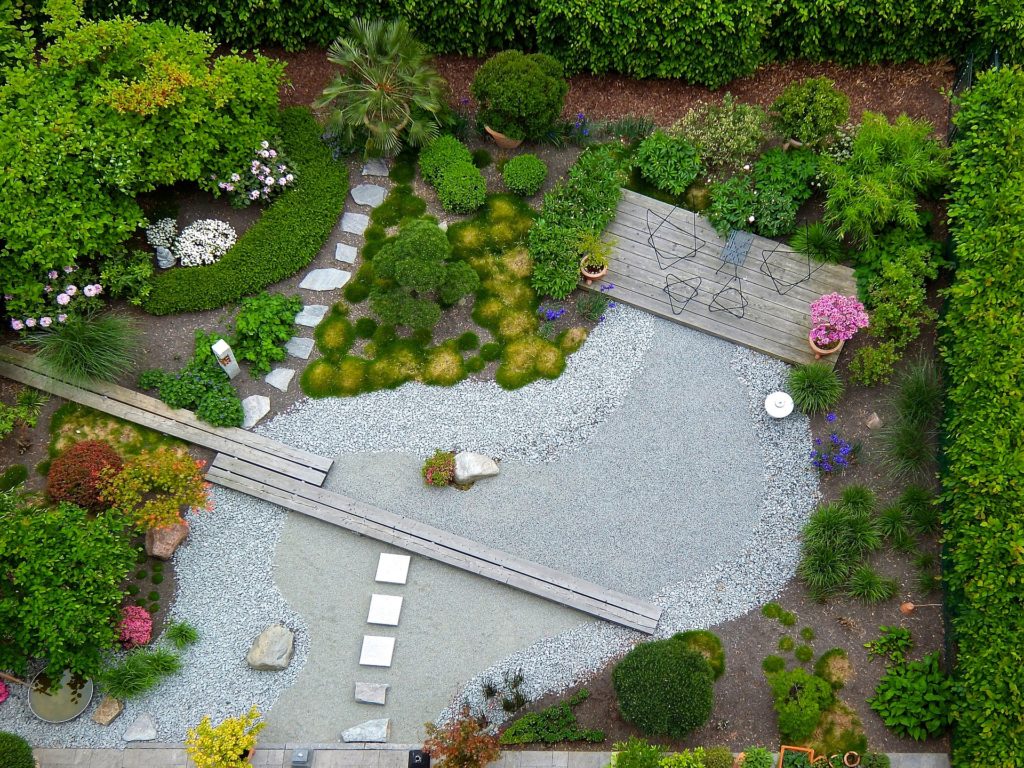
There are more than a few ways you can do this, and most of them involve strategies for water detention and/or retention. There is a difference between the two and one is more effective than the other at managing the flow of stormwater. In order to help you manage your storm drainage as best as possible, let’s take a look at water detention vs. retention and a few good ideas for mitigating moisture issues.
Detention vs. Retention
A retention tank usually refers to a tank that is meant to be filled with stormwater so that it can be used for a different purpose at a later time. Detention tanks, on the other hand, are used to meter the flow of stormwater back into the soil or additional drainage systems which eventually lead back to a local sewer. They do not store water indefinitely, but slowly release it back into the soil or the sewers.

For both commercial and residential purposes, you want some type of drainage method that involves water detention because these types of water management systems are able to handle much higher volumes of water than retention tanks.
The Best Water Detention Methods
When it comes to storm water detention, there are a few different options. Water detention tanks are often used as a way to store water that’s been diverted into them until it can be slowly released back into the soil.
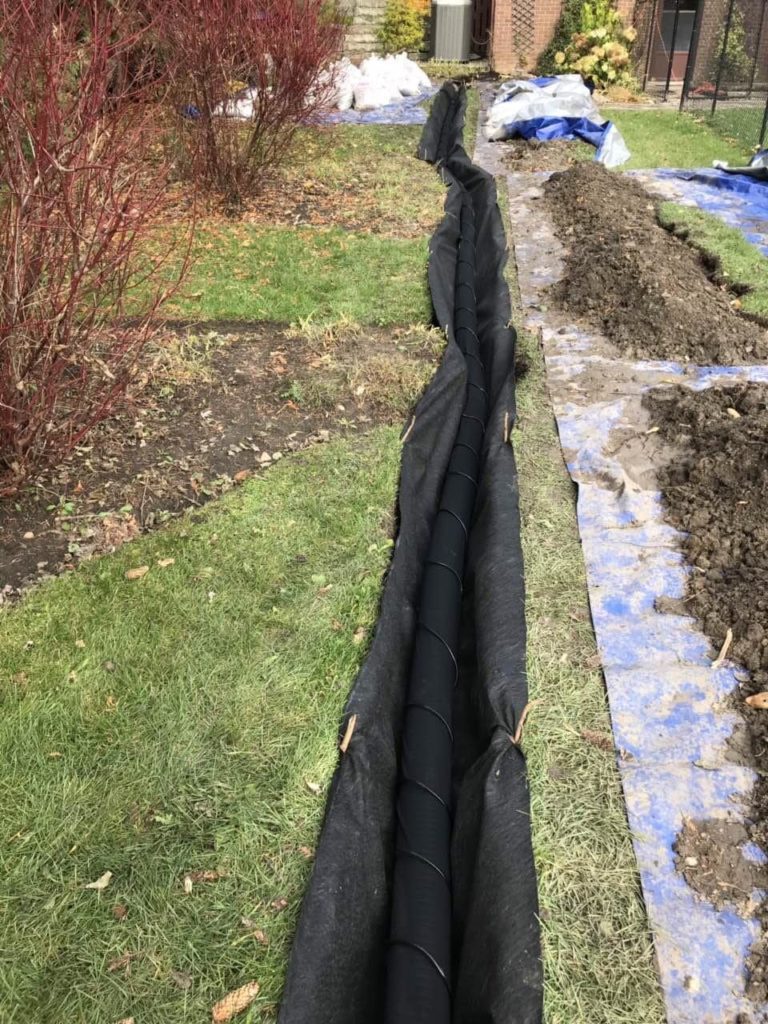
Many times, a water detention tank will be connected to a series of pipes and grates designed to divert excess water into them. These tanks will remain empty until heavy rainfall occurs, at which point they temporarily fill up before slowly emptying into whatever local sewer system they’re connected to.
Of course, the downside to installing water detention systems with a bunch of additional equipment is both the cost and installation time. It can take weeks to complete the installation of a water detention system that is capable of handling heavy rains, and the cost is generally much higher as well because of the labor and special equipment involved.
There’s also regular maintenance that needs to be performed on a water detention tank, which adds to the overall cost. You could also use something like a storage basin or pond, which is basically the above-ground version of a water detention tank.
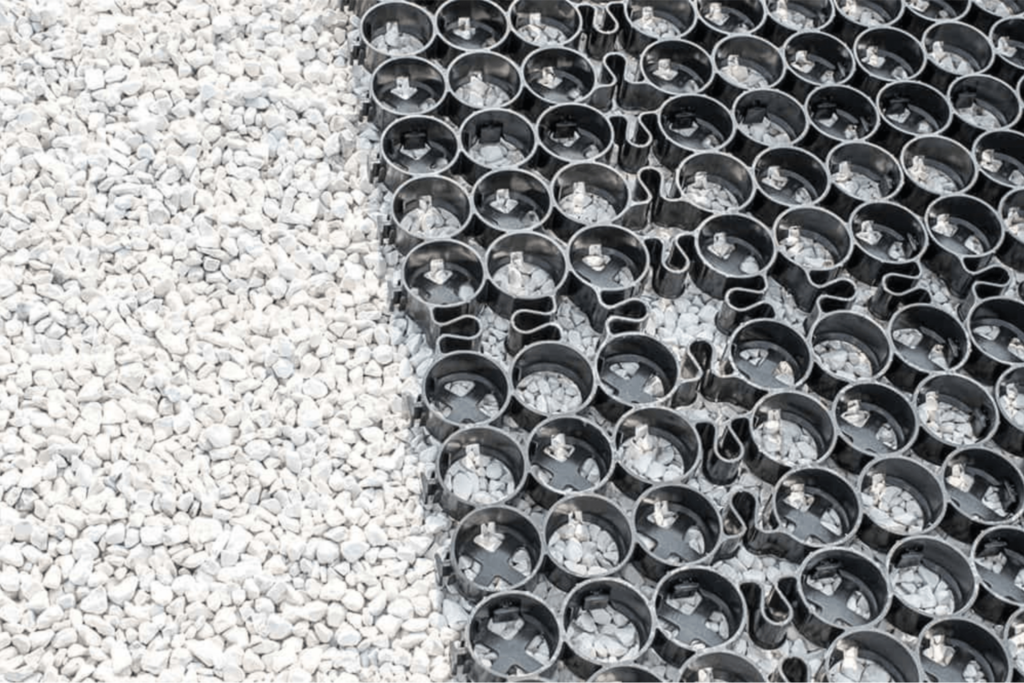
Another method of water detention is to use permeable pavement. TRUEGRID, for example, can provide you with a water detention system in the form of either TRUEGRID PRO LITE or TRUEGRID PRO PLUS permeable pavers. This system uses interlocking plastic pavers along with washed angular stone that provides detention and allows storm water to detain below the surface and matriculate back into the soil at a safe rate.
You can cut costs on water detention by using TRUEGRID pavers because they don’t require any additional piping or drainage grates. TRUEGRID pavers are also much easier to install, and installation is much faster than with a traditional water detention system that involves pipes and a detention tank.
Why are TRUEGRID Pavers the Best Choice for Water Detention?
When you factor in longevity, ease of installation, durability, lack of maintenance requirements, and a 100%-permeability level, it’s not hard to see why TRUEGRID permeable plastic pavers are the smartest choice for water detention.
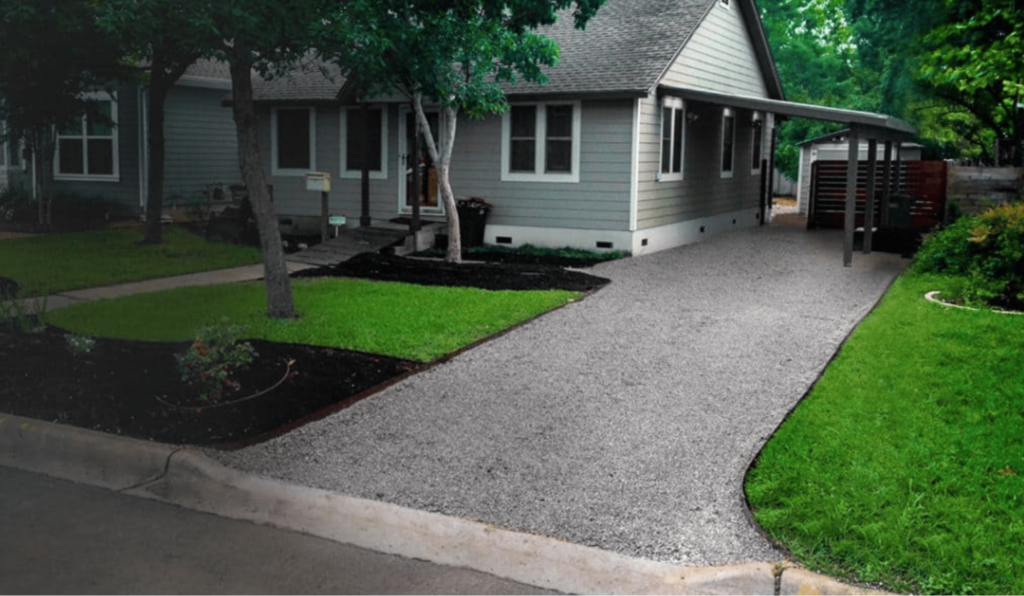
They can handle the heaviest of rain flows and allow you to maximize your land usage by using your paved surfaces as a two-in-one solution for both drainage and foot/vehicle traffic. The installation process for these pavers is super simple. First, the area is excavated to a depth of about 8 inches and a piece of fabric is laid at the bottom to provide separation from the base stone.
Then, the base rock is put in and compacted, at which point the empty pavers are snapped together over the surface like LEGO blocks. More aggregate is then used to infill the TRUEGRID and provide surface and the aesthetic of your choice. The infill aggregate also anchors in the TRUEGRID so that no added accessories such is stakes are needed.
Mitigate Flooding and Moisture Issues with TRUEGRID Permeable Pavers
If you want to manage stormwater as best as possible, you need to go with some form of water detention strategy. Detention tanks and ponds can work, but are costly and require constant maintenance and loss of land.
If you want a way to manage moisture that’s less costly in the long run, more eco-friendly, lasts longer, requires less maintenance, and allows you to make better use of your square footage, then call TRUEGRID today to get in touch with a pavement professional who can get you pointed in the right direction.
When it comes to snow and water mitigation in your driveway, gravel is by far one of the best materials to use. Any permeable materials are better than non-permeable ones, but gravel, in particular, is especially great at facilitating maximum drainage. Gravel is also one of the easiest materials to install and depending on how you install it, could provide you with almost 100%-permeability and effectively eliminate any concerns you have about flooding or snow buildup.
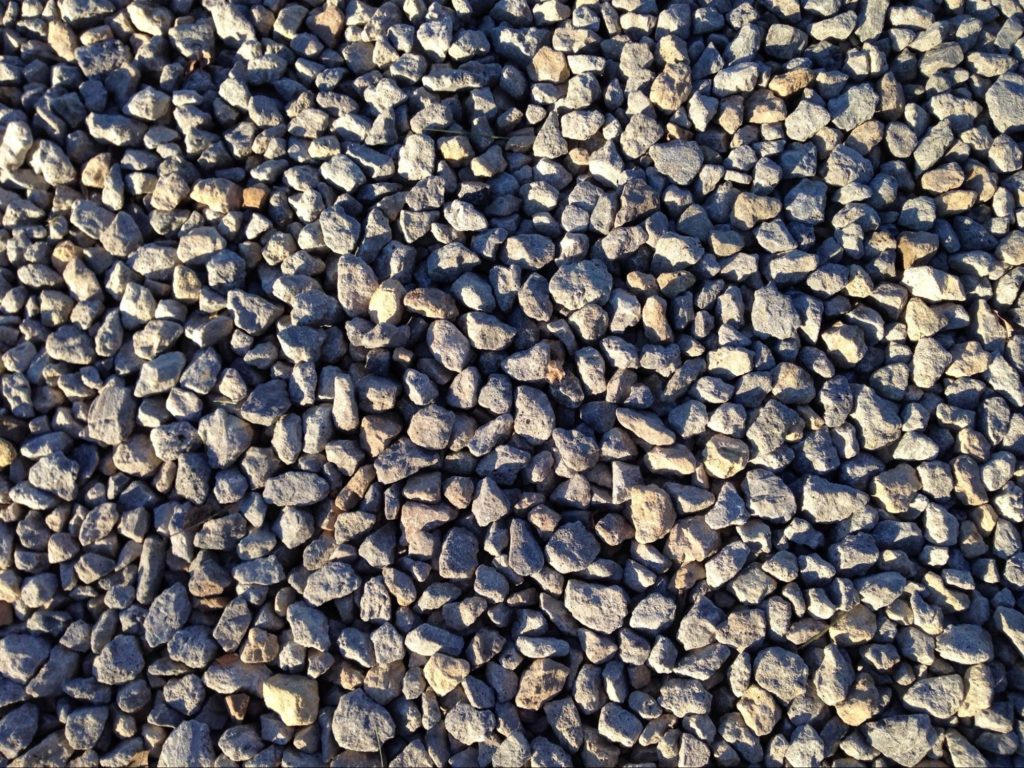
DIY gravel driveways are especially popular among homeowners because they cost less to install and can be completed rather quickly. If you’re looking for ideas on how to implement a permeable gravel driveway, here are a couple of diy gravel driveway ideas:
Loose Gravel
Loose gravel is one of the most common diy gravel driveway ideas. It drains water and mitigates snow buildup much more effectively than something like asphalt or concrete. The only downside to using loose gravel is that it spreads and disintegrates rather quickly.
This can lead to ruts and mud holes if you don’t constantly replace and rake the gravel, especially if you don’t have some type of border keeping it in place. Installing a loose gravel driveway is incredibly simple and can be completed in a handful of hours.
First, you need to mark out the area you want to use as a driveway with string and landscape stakes. Then, clear out the grass and topsoil from the area. This can be done with a shovel for small driveways, but you may want to rent an excavator or hire a pro to do it for you if your driveway is larger.
By multiplying the height, length, and width of your driveway, you can arrive at an estimate of how many cubic yards your driveway is. Once you have this information, a gravel company can provide you with an estimate as to how many tons of gravel you’ll need, depending on what type you choose.
After you’ve determined how much gravel you’ll need, simply level the path of your driveway by hand or with a backhoe. You can also lay a weed barrier down at this point if you like. Once your gravel has been delivered you’ll want to spread and compact the base layer to create a somewhat sturdy foundation. Next, you’ll want to spread the second layer of gravel before finally spreading and smoothing the final layer.
Once this is done, your loose gravel driveway is complete. It should drain water rather effectively and despite needing constant maintenance, will serve you quite well when it comes to mitigating both water and snow buildup.
Stabilized Gravel with Permeable Pavers
Loose gravel is okay for mitigating water and snow in your driveway, but using permeable pavers to stabilize gravel is one of the best diy gravel driveway ideas you’ll find. Stabilized gravel not only provides a more sturdy surface, it also prevents the spread of gravel and reduces the amount of maintenance you need to perform on your driveway to almost zero.
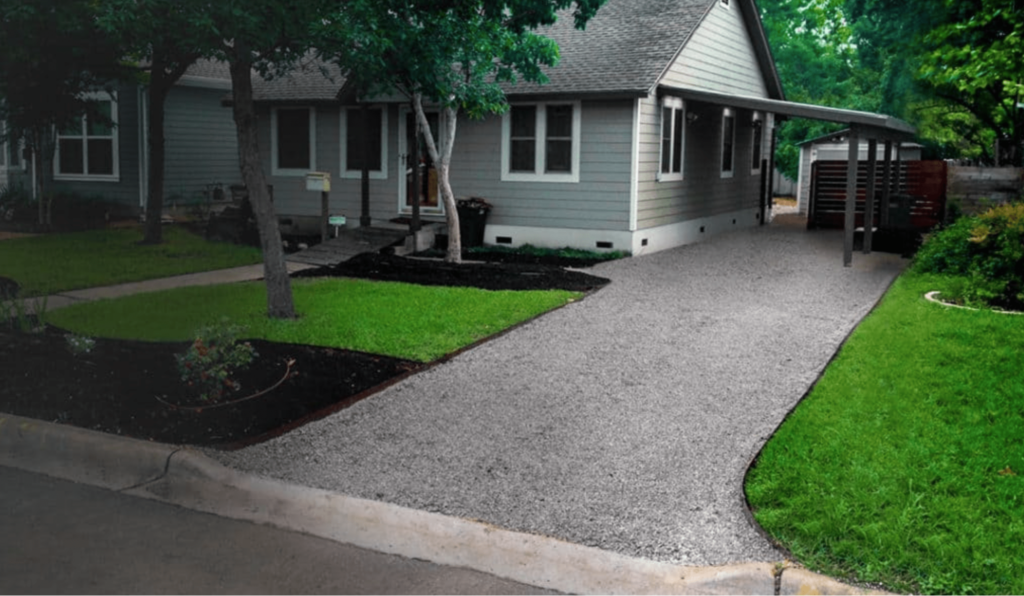
TRUEGRID pavers, for example, can be used to help you achieve 100%-permeability in your driveway. Both TRUEGRID PRO LITE and TRUEGRID PRO PLUS will lock gravel into the surface of your driveway while also spacing it out in such a way that provides better drainage capabilities than a loose gravel driveway.
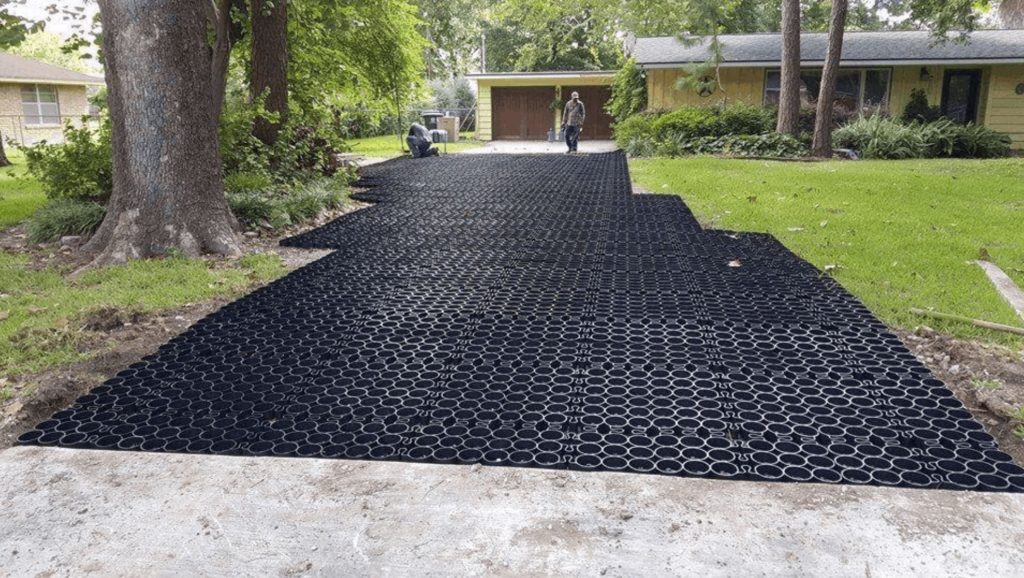
TRUEGRID pavers help to prevent snow buildup as well, since the internal temperature of the surface of the pavers stays warmer than the surface of an asphalt or concrete driveway, to melt snow faster and prevent as much of it from piling up.
The installation process for a TRUEGRID driveway is about as simple as it gets, and can be completed in a day or less in many cases. First, the driveway area is excavated to a depth of about 8 inches, at which point a piece of fabric is laid down to prevent the migration of gravel into the soil.
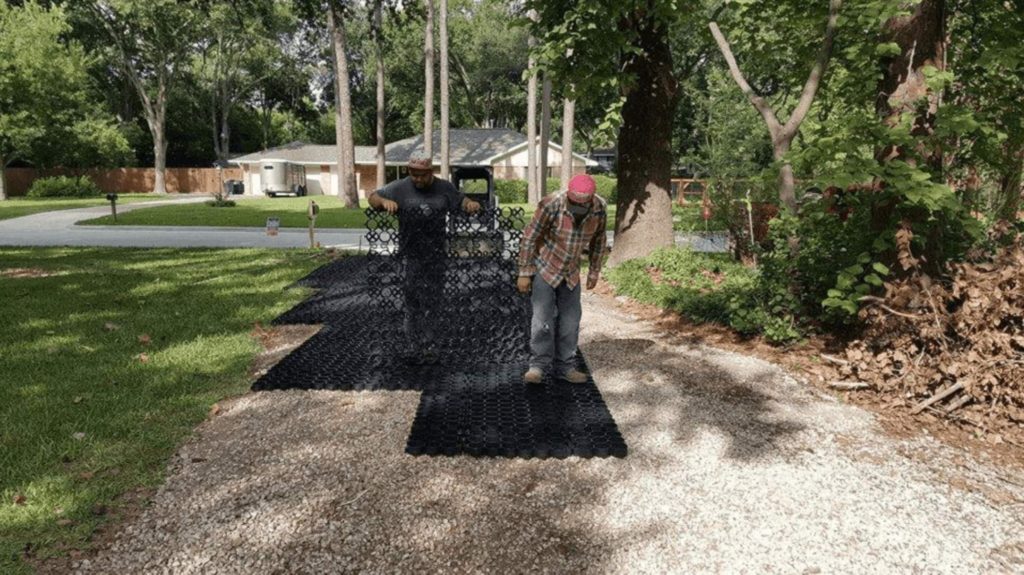
Then, the excavated pit is filled with washed angular stone, and compacted until level. Afterward, the empty TRUEGRID pavers are snapped together in place over the base aggregate. Finally, infill the TRUEGRID with the aggregate that fits your aesthetic. The infill aggregate also anchors down the TRUEGRID, which prevents them from shifting under the weight of vehicles.
This completes the installation of a stabilized gravel driveway, with the entire process often taking less time to complete than that of a loose gravel driveway. This quick and easy process is why many consider permeable pavers one of the best diy gravel driveway ideas to choose from.
TRUEGRID Pavers are the Best Option for Snow and Water Mitigation
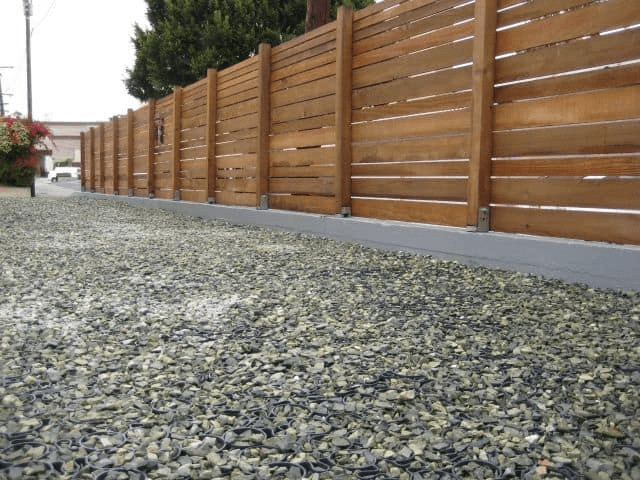
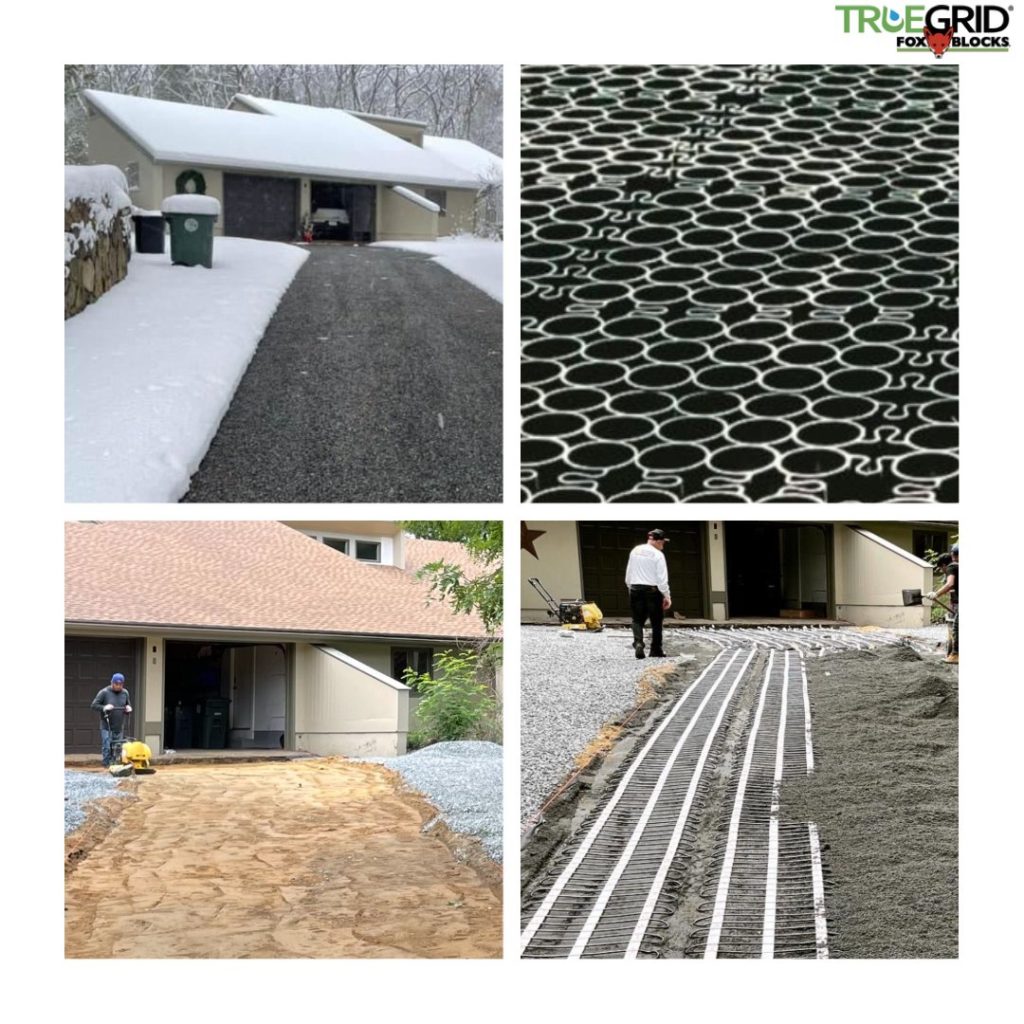
Mitigating snow and water in your driveway is important for preventing degradation and minimizing the amount of maintenance you need to perform. If you want the best option available for mitigating snow and water, call TRUEGRID today and get in touch with a pavement professional for a free quote.
If snow is a regular occurrence in your driveway or parking lot, you probably know all too well the danger it poses. Snow isn’t just an inconvenience, it can lead to accidents and injuries as well. That’s why everyone has some type of method for removing snow from their driveways and parking lots during the winter, with many options available to choose from.
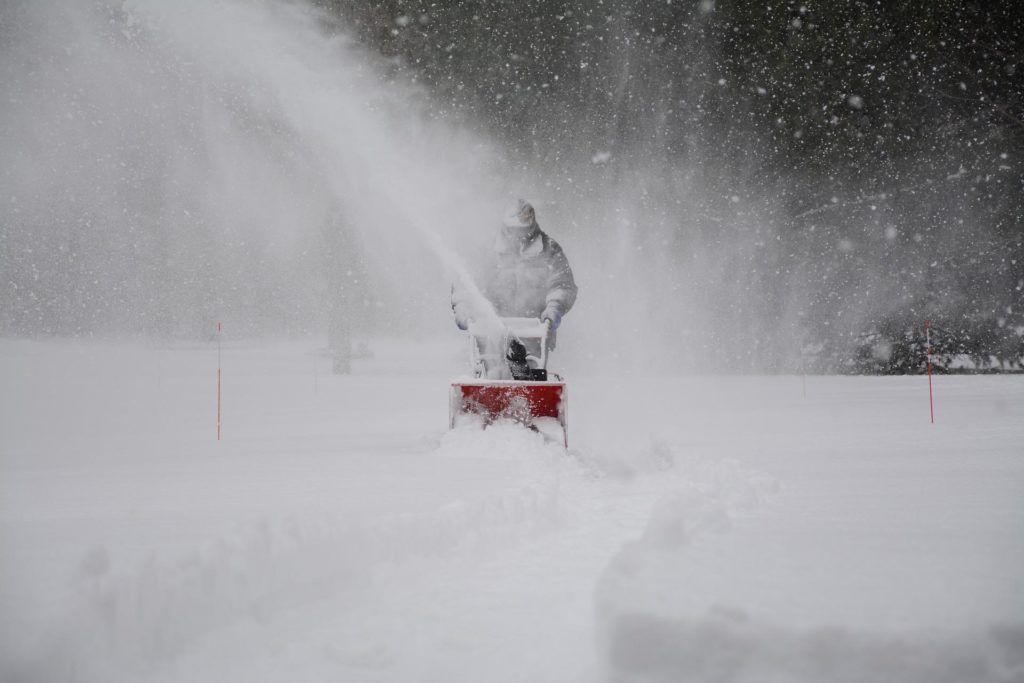
Most will simply use a snow shovel, a snowplow, and/or de-icing salt on their paved areas to remove the snow, but implementing pavers is another way to boost your snow mitigation abilities as well. Asphalt and concrete are the most common materials for building pavement, but they are both vulnerable to cold and snow, and can break down quickly and let moisture rest on the surface as opposed to draining it.
Permeable pavers are the single best pavement option for mitigating snow and ice, so in case you’re building a driveway, parking lot, or other paved area in a location with plenty of snow, here are the best paver options for snow removal.
What Makes Pavers Better for Snow Removal?
Permeable pavers, specifically, are best suited for snow removal because of their permeability. They do not allow water to rest on the surface and freeze into ice, but instead, will let it drain into the soil below, before it has a chance to freeze.
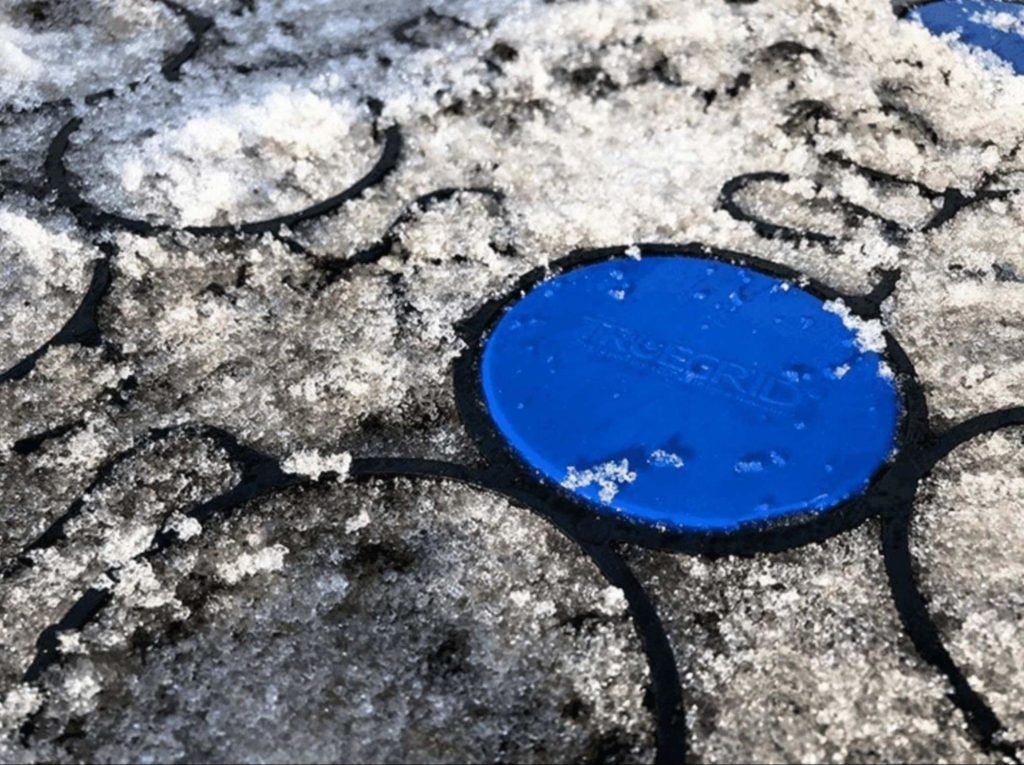
Because of this, permeable pavers like the kind made by TRUEGRID, for example, have a slightly higher temperature inside their surface, which can facilitate faster drainage and easier paver snow removal as a result. This means you’ll generally see less snow buildup on your grass paver / porous pavers than you would if it was made out of asphalt or concrete. It is one of the reasons why the snow removal on paver reviews are excellent for TRUEGRID pavers.
Permeable pavers like TRUEGRID PRO LITE and TRUEGRID PRO PLUS are also better in cold weather because they’re made from HDPE and have UV inhibitors as well. This means that TRUEGRID pavers perform exceptionally in cold weather, since they’re essentially impervious to freeze/thaw cycles as well as sub-zero temperatures. Unlike asphalt and concrete, they do not become more brittle or fragile in cold weather.
Snow Removal Options for Permeable Pavement
When it comes to what can be used for snow on pavers driveways, the answer is anything you would use on an asphalt or concrete driveway. Shovels, snowblowers, and snowplows can all be effectively used when dealing with a paver driveway and snow removal.
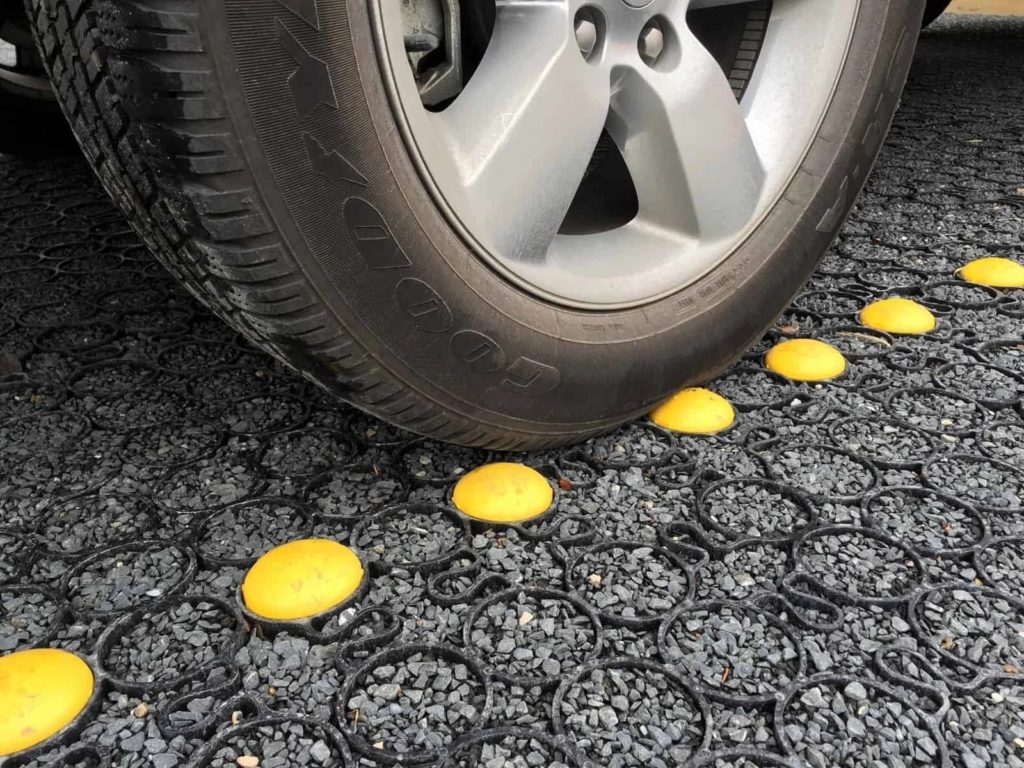
Just like with other materials, you want to be careful not to scrape the actual pavement itself with a shovel or other snow removal tool, but pavers are no more difficult to shovel or plow than asphalt or concrete. You simply want to set the plow or shovel to about 2 inches above the ground so that you don’t catch the edge of a paver and accidentally pull it up or break it.
The good news, though, is that even if you manage to damage a TRUEGRID paver, the replacement process can be completed in minutes. In fact, there is significantly less risk involved in TRUEGRID permeable paver driveway snow removal than there is with other materials because you’d only have to swap out a damaged paver grid for a fresh one. With asphalt or concrete, the process of repairing damaged pavement is much more costly and time-consuming.
TRUEGRID Makes for Incredibly Easy Snow Removal
TRUEGRID pavers are so effective at mitigating snow that you can even build an entire commercial parking lot out of them and still expect your pavement snow removal duties to be easier than if you had an asphalt or concrete lot.
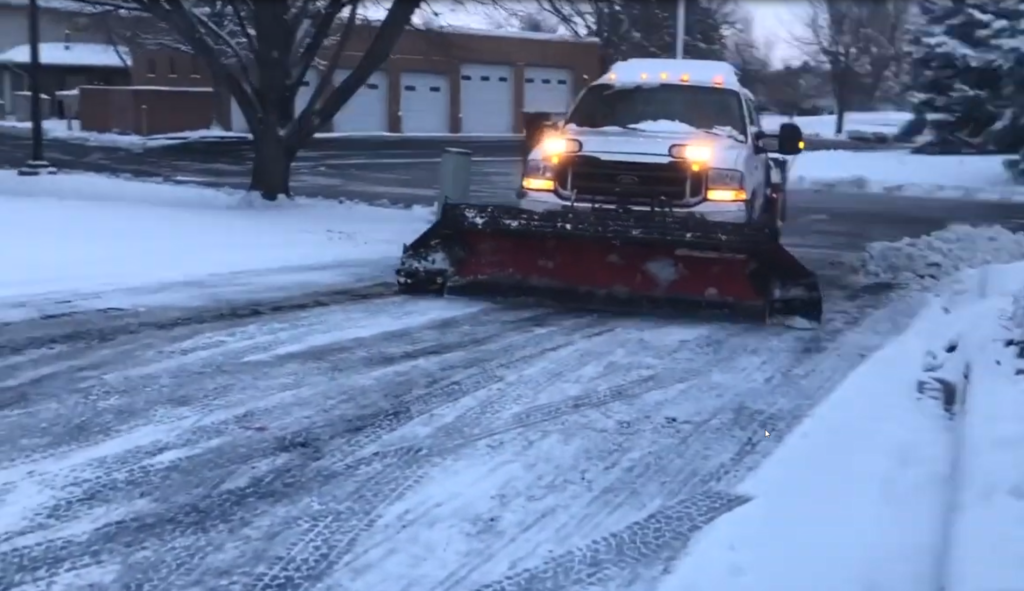
This means that snow removal for paver driveways and snow removal for paver parking lots can be handled with minimal effort on your part. This is great for commercial parking lots, especially, because you don’t have to worry about providing additional lot drainage for the snow once it melts and turns into water.
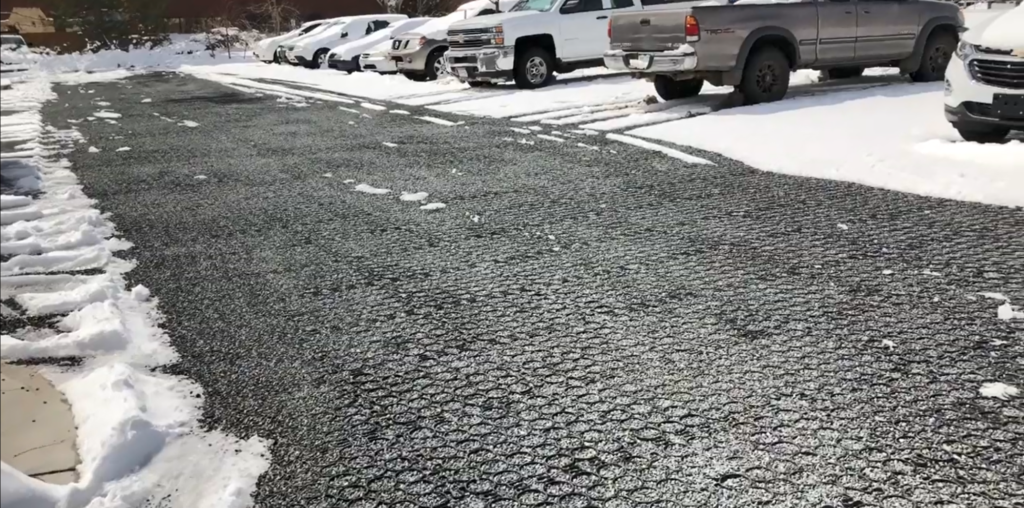
TRUEGRID isn’t just good at making snow removal easier, it’s also way faster to install than concrete or asphalt. This means you can achieve superior snow removal capabilities in as little as one day for driveways and only a handful of days for bigger projects, like commercial parking lots.
Put an End to Your Snow Removal Worries with Permeable Pavers
If your main goal is to make life easier on yourself by lessening the amount of work you have to do in the winter when it comes to snow removal, TRUEGRID permeable pavers are the right choice for you. If you want a paver option for driveway snow removal that’s easy to maintain, provides high visibility in snowy conditions, and requires very little maintenance, don’t hesitate to contact the professionals at TRUEGRID today.
There’s nothing better than spending a day on the golf course. That’s probably why so many new golfers are gravitating toward the sport of golf as they look for new ways to enjoy outdoor activities.

Indeed, the fresh air, camaraderie, and friendly competition that 18 holes provide is truly one-of-a-kind, but if you want to play all 18 holes, you need a golf cart path you can get around on. Golf cart paths come in all shapes and sizes and they’re vital to traversing the entire course with all your gear.
Many golf courses use dirt, asphalt, concrete, and other materials to build their golf cart paths, and there are pros and cons to each. One material, however, stands above the rest when it comes to paving golf cart paths. In case you’re looking to pave a golf cart path, let’s take a look at the best material you can use.
Why Do Golf Cart Paths Need Better Pavement?
It goes without saying that the better your golf cart path looks, the better your course looks, overall. The paths themselves wind and twist throughout the entire course, so having paths that look good is vital to completing the full aesthetic.
You also need golf course cart path paving materials that can handle stormwater with ease. Flooding is a major issue that you don’t want on your courses and with the way so many courses are laid out, there are bound to be low points where water pools. What you don’t want is water running off of your golf cart paths and into these pools, because it will take them longer to drain and dry.
If you want golf cart paths that will drain stormwater without any problems, you need permeable pavement. Permeable plastic pavers can achieve up to 98% permeability and can effortlessly drain even the heaviest of rains.
What Makes Permeable Pavers the Best Choice for Golf Cart Paths?
The durability, longevity, permeability, eco-friendliness, and ease of maintenance make permeable pavers the number one choice for cart path paving for a golf course, hands down. TRUEGRID, for example, makes their permeable pavers from 100%-recycled plastic.

This allows the pavers to be incredibly durable and resilient while also being eco-friendly. In fact, TRUEGRID permeable pavers are even able to withstand the weight of a monster truck jumping off a ramp and landing on them without breaking. That’s before they’ve even been filled with gravel.
TRUEGRID pavers are 100%-permeable, meaning they outperform many other permeable options when it comes to permeability. This means you’ll be able to mitigate flooding more effectively than if you had impermeable pavement, or no golf cart paving at all.
TRUEGRID Pavers are the Best Choice for Any Golf Course
TRUEGRID PRO LITE or TRUEGRID PRO PLUS pavers are the perfect choice for any golf course cart path. Combined with gravel, they work to create a stable, level surface for driving and walking. The gravel is never displaced out of the pavers, and the pavers never shift or move.
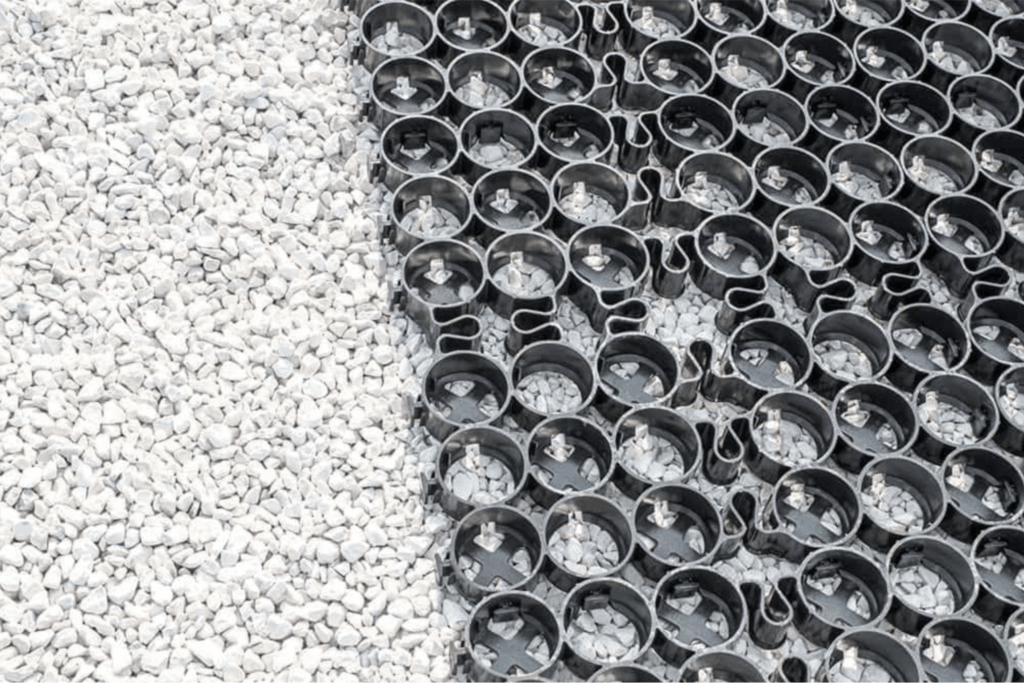
The installation process for these pavers is incredibly simple as well. It can be completed in a fraction of the time it would take you to lay many other types of pavement. First, the cart path is excavated to a depth of about 5 inches, at which point a piece of fabric is laid at the bottom to prevent the migration of gravel.
Next, the excavated area is filled with washed angular stonel and compacted until level. Afterward, the TRUEGRID pavers are snapped into place over the top of the base stone as easily as LEGO blocks. Then, you simply infill the TRUEGRID with the aggregate of your choice.
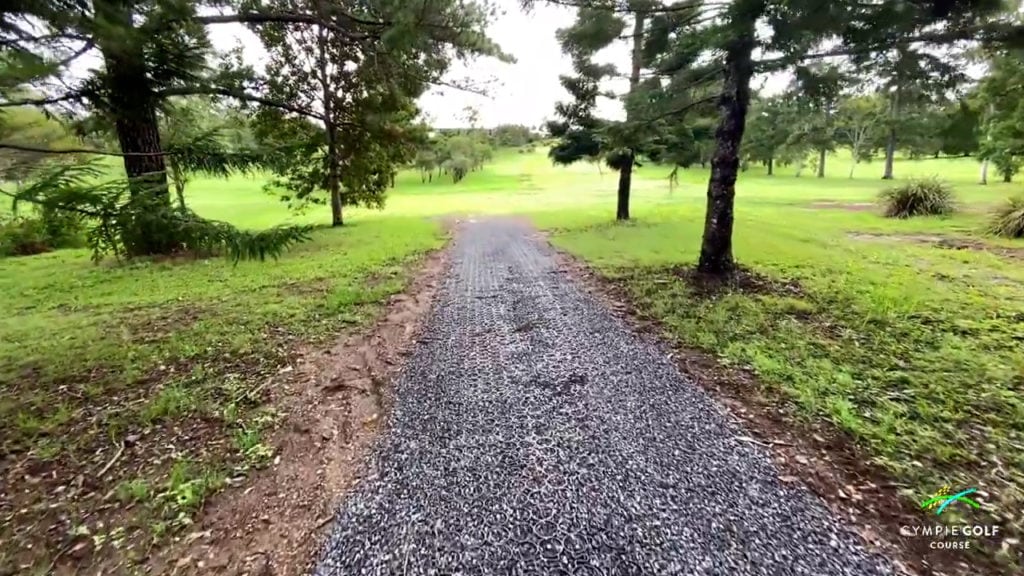
If you want to keep your course gravel-free, you could opt for TRUEGRID ROOT pavers instead. They are made from recycled plastic as well, but are designed to be pressed right into grassy areas, turning them into walkable, drivable areas without disturbing the grass at all.
All you have to do to install TRUEGRID ROOT is roll the pavers out and drive over them. The grass will continue growing up through the pavers and you can cut it as short as you want for visibility.
Upgrade Your Golf Course Cart Paths with TRUEGRID
Maintaining a golf course is hard work, so why make it harder on yourself by using anything other than TRUEGRID permeable pavers for golf cart paving? There is almost no maintenance required throughout their 60-year lifespan, and TRUEGRID pavers are the perfect choice if you want to implement style, durability, versatility, and expert drainage capabilities into your golf course cart paths.
If you’re looking to pave your cart paths and you want the highest-quality permeable pavement out there, don’t hesitate to contact TRUEGRID today for a free quote.

